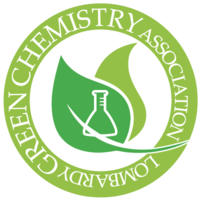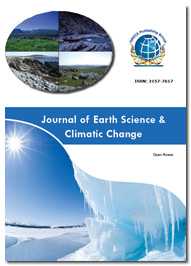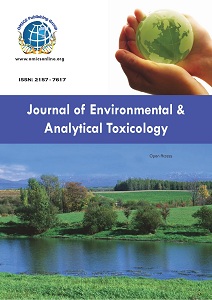Theme: Addressing Pollution Challenges and Solutions towards Sustainable Green Environment
Pollution Control Congress 2018
Conference Series llc LTD takes immense pleasure to extend our warm welcome to invite all the participants from all over the world to attend 2nd Annual Congress on Environmental Pollution and Health hazards October 22-23, 2018 Osaka, Japan which will entail lively debates, prompt keynote presentations, Oral talks, Poster presentations, workshops and networking opportunities around a core of plenary and concurrent sessions based on essential topics in the Pollution Control sector.
Pollution Control Congress 2018 conference is organizing with the theme of “Addressing Pollution Challenges and Solutions towards Sustainable Green Environment”.
Conference Series llc LTD organizes a conference series of 1000+ Global Events inclusive of 500+ Conferences, 700+ Upcoming and Previous Symposiums and Workshops in USA, Europe & Asia with support from 1000 more scientific societies and publish 700+ Open access journals which contains over 50000 eminent personalities, reputed scientists as editorial board members.
Pollution control Congress 2018 Conference is a forum to explore issues of mutual concern as well as exchange knowledge, share evidence and ideas, and generate solutions. The conference is all about promoting global health issues and advanced technologies used to control and regulate the pollution. This conference includes various types of pollutions, human impact on the environment, pollution risk assessment, advanced control methods.
The Conference brings together experts, researchers, scholars and students from all areas of Basic science, Chemical engineering, Earth and planetary sciences, Ecology, Environmental science, Environmental toxicology, Bioremediation and Public health, Occupational and industrial safety.
One of the major trends in the market is the development of new and improved air pollution control systems/equipment with enhanced reliability and reduced power consumption; for instance, development of an optimized wet process that has higher desulfurization efficiency and improved limestone injection.
According to the report, increased demand for power is one of the major factors driving the market. Coal-based power plants emit a large volume of harmful gases into the environment. This has created the need to install and adopt air pollution control equipment in plants. The analysts forecast the Global Air Pollution Control market to grow at a CAGR of 6.67% over the period 2014-2019.
Analysis of the Global Air Pollution Control Equipment in Energy and Power Market finds that the market earned revenues of $7.27 billion in 2010 and estimates this to reach $9.69 billion in 2017.
Conference Series llc LTD cordially invites all the participants to attend "2nd Annual Congress on Environmental Pollution and Health hazards" during October 22-23, 2018 at Osaka, Japan. The main theme is "Addressing Pollution Challenges and Solutions towards Sustainable Green Environment"
Pollution Control Congress 2018 Conference brings together experts, researchers, scholars and students from all areas of Basic science, Chemical engineering, Ecology, Environmental science, Environmental toxicology, Bioremediation and Public health, Occupational and industrial safety.
Track: Environmental Pollution
One of the biggest problems that we are facing today is that of Environmental pollution, Environmental Pollution is an undesirable change in the physical, chemical or biological characteristics of air, water and soil that may harmfully affect the life or create potential health hazard of any living organism. Increasing with every passing year and causing grave and irreparable damage to the earth. Environmental pollution consists of five basic types of pollution, namely, air, water, soil, noise and light. Pollution is thus direct or indirect change in any component of the biosphere that is harmful to the living components.
Pollution refers to the very bad condition of environment in terms of quantity and quality. Pollution control is a term used in environmental management. It means the control of emissions and effluents into air, water or soil. Without pollution control, the waste products from overconsumption, heating, agriculture, mining, manufacturing, transportation and other human activities, whether they accumulate or disperse, will degrade the environment. In the hierarchy of controls, pollution prevention and waste minimization are more desirable than pollution control.
Related: Pollution Control Conferences | Global Warming Conferences | Climate Change Conferences | Environmental Conferences | Natural Hazards and Disaster Management
Track: Pollution Sources & Effects
The sources and causes of environmental pollution include the following:
Industrial activities: The industries all over the world that brought prosperity and affluence, made inroads in the biosphere and disturbed the ecological balances. The improper disposals of industrial wastes are the sources of soil and water pollution. Chemical waste resulting from industry can pollute lakes, rivers and seas and soil too as well as releasing fumes.
Fuel emissions: The smoke emitted by vehicles using petrol and diesel and the cooking coal also pollutes the environment. The multiplication of vehicles, emitting black smoke that, being free and unfettered, spreads out and mixes with the air we breathe.
Rapid urbanization and industrialization: The urbanization and the rapid growth of industrialization are causing through environmental pollution the greatest harm to the plant life, which in turn causing harm to the animal kingdom and the human lives.
Population overgrowth: Due to the increase in population, particularly in developing countries, there has been surge in demand for basic food, occupation and shelter.
Environmental pollution has negatively affected both human beings and animals. Almost all of our success in the fields of industrial progress, science and technology had so far been realized at the cost of our health. Even our flora and fauna were found to be threatened with extinction.
The environmental pollution is not caused by the fall-out from nuclear tests or industries alone. The smoke left behind the automobiles and other vehicular traffic, the increasing use of synthetic detergents, nitrogen fertilizers and insecticides contaminate both air and water.
Related: Pollution Control Conferences | Global Warming Conferences | Climate Change Conferences | Environmental Conferences | Natural Hazards and Disaster Management
Track: Global warming
Global warming is the defined as gradual rise in the average temperature of the Earth's atmosphere due to change in the climate. The increased volumes of carbon dioxide and other greenhouse gases released by the burning of fossil fuels, land clearing, agriculture, and other human activities, are believed to be the primary sources of the global warming. Changes resulting from global warming may include rising sea levels due to the melting of the polar ice caps, increase in occurrence and severity of storms and other severe weather events leading to natural calamities and disasters.
Related: Pollution Control Conferences | Global Warming Conferences | Climate Change Conferences | Environmental Conferences | Natural Hazards and Disaster Management
Track: Ocean and Climate change
Climate change is an adjustment in the factual conveyance of climate, Climate change may allude to an adjustment in normal climate conditions, or in the time variety of climate around longer-term normal conditions. Certain human exercises have additionally been recognized as significant causes of recent climate change, often referred to as global warming.
A Sea level rise is a rise in the water volume, leading to an increase in world Sea level. Sea level rise is typically attributed to Global Climate change by thermal expansion of the water within the oceans and by melting of Ice sheets and glaciers ashore. Sea surface temperature has been systematically higher throughout the past three decades. Sea level rise is primarily measured by tide stations and satellite laser altimeters. Sea level rise is caused primarily by two factors associated with Global warming, the thermal expansion of ocean water and from melting ice sheets and glaciers because it warms. Global Warming affects weather patterns as they pertain to cyclones.
Related: Pollution Control Conferences | Global Warming Conferences | Climate Change Conferences | Environmental Conferences | Natural Hazards and Disaster Management
Track: Pollution Analysis
Environmental Monitoring and Assessment discusses technical developments and data arising from environmental monitoring and assessment, principles in the design of monitoring systems, and the use of monitoring data in assessing the consequences of natural resource management and pollution risks.
Pollution Analysis can provide an important aid in the choice of the strategy to control the level of some hazardous elements. The difficulties in detecting polluting sources from experimental data are related not only to the adoption of suitable and systematic measuring procedure, but also to a correct management of the available information. From the theoretical point of view, the use of simplified models, coupled with classical regularization techniques, shows that, in general, the problem is badly posed and consequently, numerically ill-conditioned. Hence the possibility of using expert systems algorithms, introducing further qualitative information, improves the reliability of the solutions.
The problem is first solved using traditional procedures, showing that the distributed sources are not recognized. Afterwards, different results obtained from various algorithms derived from the assumed a-priori knowledge are examined. In this case, it is possible to obtain a more realistic situation of the pollution sources, inside the boundaries of the controlled area.
Related: Pollution Control Conferences | Global Warming Conferences | Climate Change Conferences | Environmental Conferences | Natural Hazards and Disaster Management
Track: Environmental Protection
In recent decades, many environmental problems have increased as the result of human activities and unplanned management of the technological development those interference ecosystems.
The term "environmental protection" can be defined as the prevention to conserve and preserve the standard healthy level of environmental media by reducing the production of pollutants or polluting substances in environmental media. Various human activities have induce many undesirable effects to the environment which can be threatening human health, economic, natural resources and gene pool of ecosystems such as pollutions, greenhouse effect, global warming and soil erosion. Therefore, the environment should be protected for a better life in future.
Related: Pollution Control Conferences | Global Warming Conferences | Climate Change Conferences | Environmental Conferences | Natural Hazards and Disaster Management
Track: Pollution Ecology & Toxicology
Pollution is the effect of undesirable changes in our environment that have harmful effects on all living Organisms. During the last few decades we have polluted our environment on which life itself depends with a variety of waste products.
Toxicology is the study of chemical or physical agents that produce adverse responses in the biological systems with which they interact.
From an Ecological point of view, pollutants can be classified as Degradable or Non-persistent pollutants which can be rapidly broken down by natural process. e.g. domestic sewage, discarded vegetables etc., Slowly-degradable or Persistent pollutants are pollutants that remain in the environment for many years in an unchanged condition and take decades or longer to degrade. e.g. DDT(pesticides) and most plastics. Non-degradable pollutants cannot be degraded by natural processes. Once they are released into the environment they are difficult to eradicate and continue to accumulate.eg: toxic elements like lead or mercury and nuclear wastes.
Related: Pollution Control Conferences | Global Warming Conferences | Climate Change Conferences | Environmental Conferences | Natural Hazards and Disaster Management
Track: Human Impact on the Environment
Human impact on environment in several ways, some common effects include water quality, environmental pollution and greenhouse gas emissions, depletion of natural resources and contribution to climate change. Some of these are the direct result of human activities, whereas others are secondary effects that are part of a series of actions and reactions. Though, technology is making lives of humans easier and comfortable. It poses a great threat to the environment. The threat is due to pollution, radiation hazards, exploitation of natural resources etc. Greenhouse gases and aerosols affect climate by altering incoming solar radiation and out-going infrared (thermal) radiation that are part of Earth’s energy balance. Changing the atmospheric abundance or properties of these gases and particles can lead to a warming or cooling of the climate system.
Related: Pollution Control Conferences | Global Warming Conferences | Climate Change Conferences | Environmental Conferences | Natural Hazards and Disaster Management
Track: Environmental Sustainability and Development
Environmental sustainability is defined as responsible interaction with the environment to avoid depletion or Environment degradation of natural resources and allow for long-term environmental quality. The practice of environmental sustainability helps to ensure that the needs of today's population are met without jeopardizing the ability of future generations to meet their needs. The three pillars of sustainability are Economic development, Social development and Environmental protection.
Environmental Performance Index (EPI) is one of the most widely used measures of well-being. The weak point of this index is that it does not take into account the concept of sustainability and, more precisely, it is lacking in the environmental component specification. On the other side of the spectrum, some indicators provide useful information about the environmental health of countries but not about Human development, such as the Environmental Performance Index (EPI)
Related: Pollution Control Conferences | Global Warming Conferences | Climate Change Conferences | Environmental Conferences | Natural Hazards and Disaster Management
Track: Pollution Solutions
The control of the emission of various contaminants into the environment which brings down the level of the pollution is done by various updated methods. The various technologies which control the pollution are Bioremediation laser methods, chemical methods, nanotechnology etc. Phytoremediation is a way to mitigate environment pollutions, such as in air, water and soil pollution in virtue of plants, more often than not, combined with their associated microorganisms. This concept has been widely applied to treat pollutants in soil and water. Vapour recovery is the process of recovering the vapours of gasoline or other fuels, so that they do not escape into the atmosphere.
Related: Pollution Control Conferences | Global Warming Conferences | Climate Change Conferences | Environmental Conferences | Natural Hazards and Disaster Management
Track: Recycling & Waste Management
The increasing trend in Recycling and waste management has increased. Recycling is a way of life. Once we have made that choice to implement all the steps of recycling in our daily lives, and stick to that choice every single day, recycling becomes second nature to us. Sure there will be lapses; it’s not easy for us creatures of habit. But no matter, we press on. Every small contribution to the recycling movement and the initiative to protect our environment adds up to how our present society eventually shapes our nation’s and the Earth’s future. Waste management or Waste disposal is all the activities and actions required to manage waste from its inception to its final disposal. Very one of us has an important role to play in reducing the quantity of waste buried in landfills. Sorting waste in order to recycle or compost it are efficient means to reduce garbage.
Related: Pollution Control Conferences | Global Warming Conferences | Climate Change Conferences | Environmental Conferences | Natural Hazards and Disaster Management
Track: Bioenergy and Biofuels
Bioenergy is the single largest Renewable energy source today, providing 10% of world primary energy supply. It plays a crucial role in many developing countries, where it provides basic energy for cooking and space heating, but often at the price of severe health and environmental impacts. The deployment of advanced biomass cook stoves, clean fuels and additional off-grid biomass electricity supply in developing countries are key measures to improve the current situation and achieve universal access to clean energy facilities by 2030.
Biofuels are produced from living organisms or from metabolic by-products (organic or food waste products). In order to be considered a biofuel the fuel must contain over 80 percent renewable materials. Bio-hydrogen may be a potential biofuel available from each cultivation and from waste organic materials. Although element is created from non-renewable technologies like steam reformation of gas, rock oil processing and chemical change of coal, chlorophyte and cyanobacteria supply another route to renewable H2 production. Steam reforming of methane made by anaerobic digestion of organic waste are often used for bio-hydrogen also. Bio-plastics are any plastic material that's either bio based, perishable, or options both properties. They’re derived from renewable biomass sources, like vegetable fats and oils, corn starch, or micro-biota. Organic phenomenon is that the production of electrical potentials and currents within/by living organisms. Bioelectric potentials area unit generated by a range of biological processes and customarily zero in strength from one to some hundred millivolts.
Related: Pollution Control Conferences | Global Warming Conferences | Climate Change Conferences | Environmental Conferences | Natural Hazards and Disaster Management
Track: Risk assessment
Risk assessment is the determination of quantitative or qualitative estimate of risk related to a well-defined situation and a recognized threat (also called hazard). Quantitative risk assessment requires calculations of two components of risk (R): the magnitude of the potential loss (L), and the probability (p) that the loss will occur. An acceptable risk is a risk that is understood and tolerated usually because the cost or difficulty of implementing an effective countermeasure for the associated vulnerability exceeds the expectation of loss. "Health risk assessment" includes variations, such as risk as the type and severity of response, with or without a probabilistic context.
In all types of engineering of complex systems sophisticated risk assessments are often made within safety engineering and reliability engineering when it concerns threats to life, environment or machine functioning. The nuclear, aerospace, oil, rail and military industries have a long history of dealing with risk assessment. Also, medical, hospital, social service and food industries control risks and perform risk assessments on a continual basis. Methods for assessment of risk may differ between industries and whether it pertains to general financial decisions or environmental, ecological, or public health risk assessment.
Related: Pollution Control Conferences | Global Warming Conferences | Climate Change Conferences | Environmental Conferences | Natural Hazards and Disaster Management
Summary of Pollution control Congress 2018:
Environmental Testing Market: By Sample (Wastewater, Soil, Water, & Air), By Contaminant (Heavy Metal, Microbiological, Organic, Residue & Solids), By Technology (Conventional & Rapid) - Forecast (2017 - 2022)
The Global Environmental Testing Market is segmented into sample, contaminant and technology. On the basis of sample the market is segmented into soil, water, air and waste water whereas contaminants category includes: heavy metals, microbiological contaminants, solids, residues and organic compounds. Sample testing for contaminants is done by manufacturing companies in order to ensure the compliance of waste or the disposals with environmental standards.
Environmental Testing Market is also segmented by technology in two methods:
- Conventional Method
- Rapid Method.
Conventional method includes dissolved oxygen determination in water analysis, chemical and biological oxygen demand and culture plate method to detect presence of microbes whereas rapid method includes immunoassay-based methods, hybridization-based technology, advanced spectrometry-based technology, biosensors application, fast in-house testing and chromatography-based technology.
Market size and forecast is provided for the regions of APAC, Europe, North America and RoW. A detailed qualitative analysis of the factors responsible for driving and restraining growth of the Environmental Testing market and future opportunities are provided in the report. This report on the global environment testing market identifies many such insights and M&A opportunities, besides providing a detailed analysis of the market.
Sample Companies Profiled in this Report are:
- Asurequality Limited(New Zealand)
- Bureau Veritas S.A.(France)
- Environmental Testing, Inc(U.S.)
- Eurofins Scientific(Luxembourg)
- Intertek Group Plc(U.K.)
- 30+.
Scope and Importance:
Environment is constituted by the associating frameworks of physical, organic and social components between related in different routes, separately and by and large. These components might be clarified as under: (1) Physical components Physical components are as space, landforms, water bodies, atmosphere soils, rocks and minerals. They decide the variable character of the human natural surroundings, its chances and also impediments. (2) Biological components Organic components, for example, plants, creatures, microorganisms and men constitute the biosphere. (3) Cultural components Social components, for example, financial, social and political components are basically synthetic highlights, which make social milieu Significance of Environment Studies: the earth contemplates illuminate us, about the significance of insurance and preservation of our aimless arrival of contamination into the environment. At present an extraordinary number of environment issues, have developed in size and unpredictability step by step, undermining the survival of humanity on earth. We learn about these issues other than and compelling recommendations in the Environment Studies.
Why Osaka?
Osaka is a designated city in the Kansai region of Japan. It is the capital city of Osaka Prefecture and the largest component of the Keihanshin Metropolitan Area, the second largest metropolitan area in Japan and among the largest in the world with over 19 million inhabitants. Situated at the starting of the Yodo River on Osaka Bay, Osaka is the second largest city in Japan, serving as a major economic hub for the country.
Osaka has a large number of wholesalers and retail shops, the stores along the arcade include commodities, clothing, and catering outlets. Osaka is known for its food, in Japan and abroad. Osaka is known for its fine sake, which is made with fresh water from the prefecture's mountains. Osaka's culinary prevalence is the result of a location that has provided access to high quality ingredients, a high population of merchants, and proximity to the ocean and waterway trade.
In recent years, Osaka has started to garner more attention from foreigners with the increased popularity of cooking and dining in popular culture. The National Museum of Art is a subterranean Japanese and international art museum, housing mainly collections from the post-war era and regularly welcoming temporary exhibitions. It is the backdrop for modern movies and pop music that enjoy worldwide recognition.
Conference Highlights:
- Environmental Pollution
- Pollution Sources & Effects
- Global warming
- Ocean and Climate change
- Pollution Analysis
- Pollution Ecology & Toxicology
- Environmental Protection
- Human Impact on the Environment
- Environmental Sustainability and Development
- Pollution Solutions
- Recycling & Waste Management
- Bioenergy and Biofuels
- Risk assessment
- Trending Market in Pollution Control
Why to Attend??
Pollution control Congress 2018 conference will feature 14 technical sessions, a poster session, exhibit hall, keynotes lectures and Special feature includes student workshop.
Pollution control Congress 2018 is a perfect platform for environmentalists, researchers, scientists, decision makers and students to come together, compare findings, and discuss the science of the future. Share your research with an engaged audience of your peers from around the globe. Learn from scientific trail blazers who are designing more sustainable processes for achieving a pollution controlled environment.
Noble laureates, Presidents, Vice-presidents, Deans, Chairs, Co-chairs, Department Heads, Environmentalists, Researchers, PhD Students, Non-PhD Students, etc.. Vendors will have the opportunity to introduce the latest advancements in Environmental pollution control technologies to a diverse audience by becoming a conference sponsor via exhibits or workshops.
- Academia 41%
- Researchers 25%
- Industries 20%
- Students 12%
- Others 3%
Top Societies Associated with Pollution Control Research
Around the Globe
- The International Biometrics Society (Australasian Region)
- The International Environmetrics Society (TIES)
- American Statistical Association Section on Statistics and the Environment
- International Environmental Modelling and Software Society (iEMSs)
- Royal Statistical Society Environmental Statistics Section
- Worldwide pollution Control Association
- Environmental Protection Agency
- National Association of Clean Air Agencies
- Air & Waste Management Association
- Cen SARA (Central States Air Resource Agencies)
- USDA Agricultural Air Quality Task Force
- Air Pollution Control Equipment Manufacturers Association of Australia
- Australian Marine Sciences Association
- Total Air Pollution Control (TAPC) Sydney, Australia
- The Australian Water Association
- Ecological Society of Australia
- The Environment Institute of Australia and New Zealand
- Food & Agricultural Organisation of the United Nations
- Australian Institute of Environmental Health
Conference Highlights
- Environmental Pollution
- Pollution Analysis
- Pollution Sources & Effects
- Environmental Protection
- Pollution Ecology & Toxicology
- Human Impact on the Environment
- Recycling & Waste Management
- Pollution Solutions
- Environmental Sustainability and Development
- Bioenergy and Biofuels
- Risk assessment
- Market Trends in Pollution
- Global Warming
- Ocean and Climate change
- Plastic Pollution
- Health Hazards
To share your views and research, please click here to register for the Conference.
To Collaborate Scientific Professionals around the World
| Conference Date | October 22-23, 2018 | ||
| Sponsors & Exhibitors |
|
||
| Speaker Opportunity Closed | Day 1 | ||
| Poster Opportunity Closed | Click Here to View | ||
Useful Links
Special Issues
All accepted abstracts will be published in respective Our International Journals.
- Journal of Pollution Effects & Control
- Journal of Environmental & Analytical Toxicology
- Journal of Earth Science & Climatic Change
Abstracts will be provided with Digital Object Identifier by























